Summer Showing and Conditioning
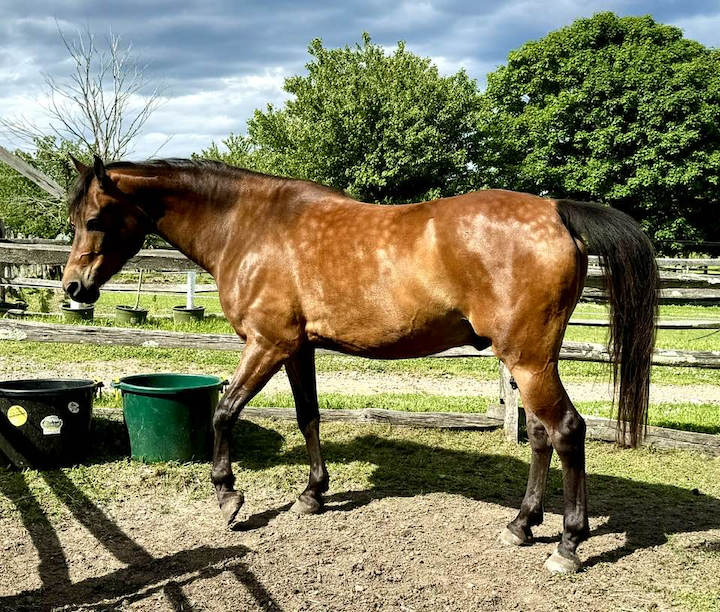
Today's post is mostly a photo and video dump of our activities over the past couple of months. We have been working through various conditioning exercises to improve Levi's aerobic and physical strength, in particular to strengthen his core and back muscles, and facilitate more collection and correct movement under cart. All of our training is based on classical dressage, and all of the exercises we do in and out of the cart were developed by professional trainers in that discipline, while his flexible curriculum was designed by me to support our future goals and his current abilities. Below is a little photo and video diary highlighting what we have been working on lately: a typical training week involves 3-4 drives of 30 minutes, featuring mostly walk-trot transitions, and at least two days per week of long-lining or work on double lunge, or work on a line or in hand going over poles.
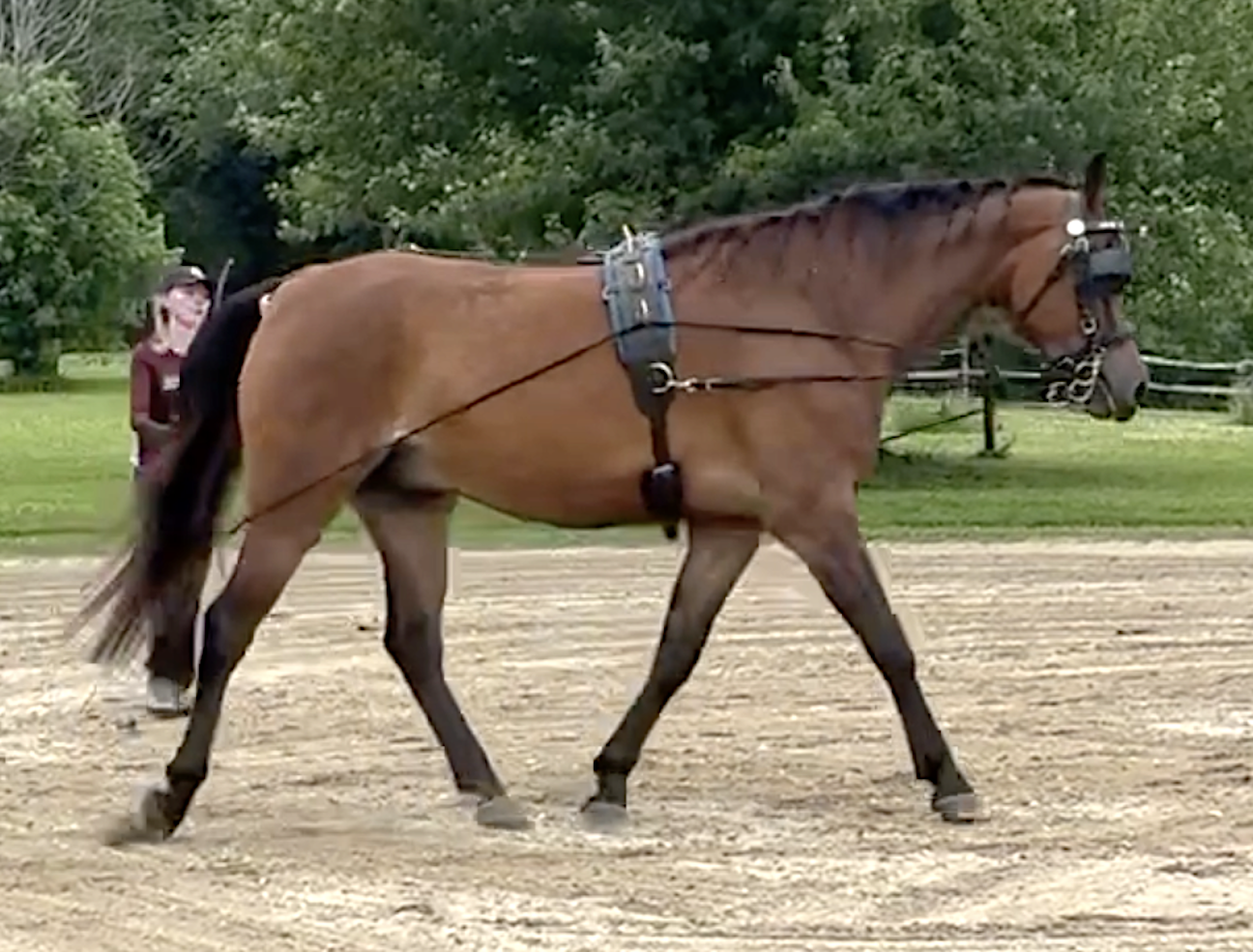
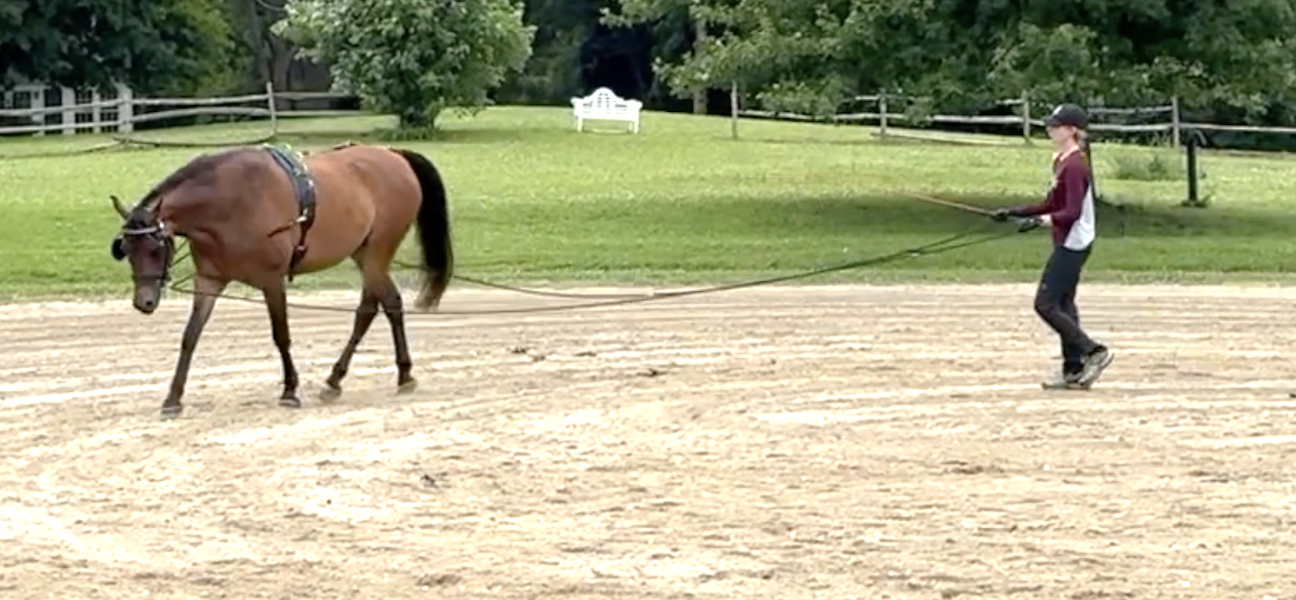
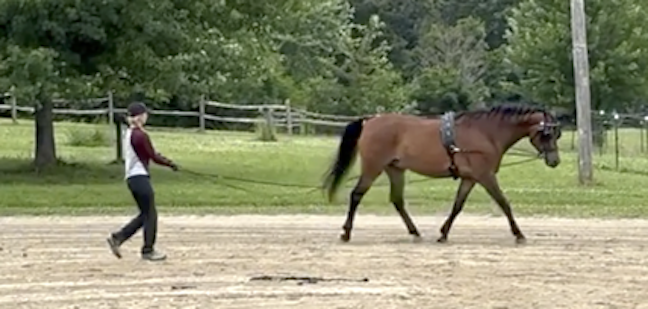
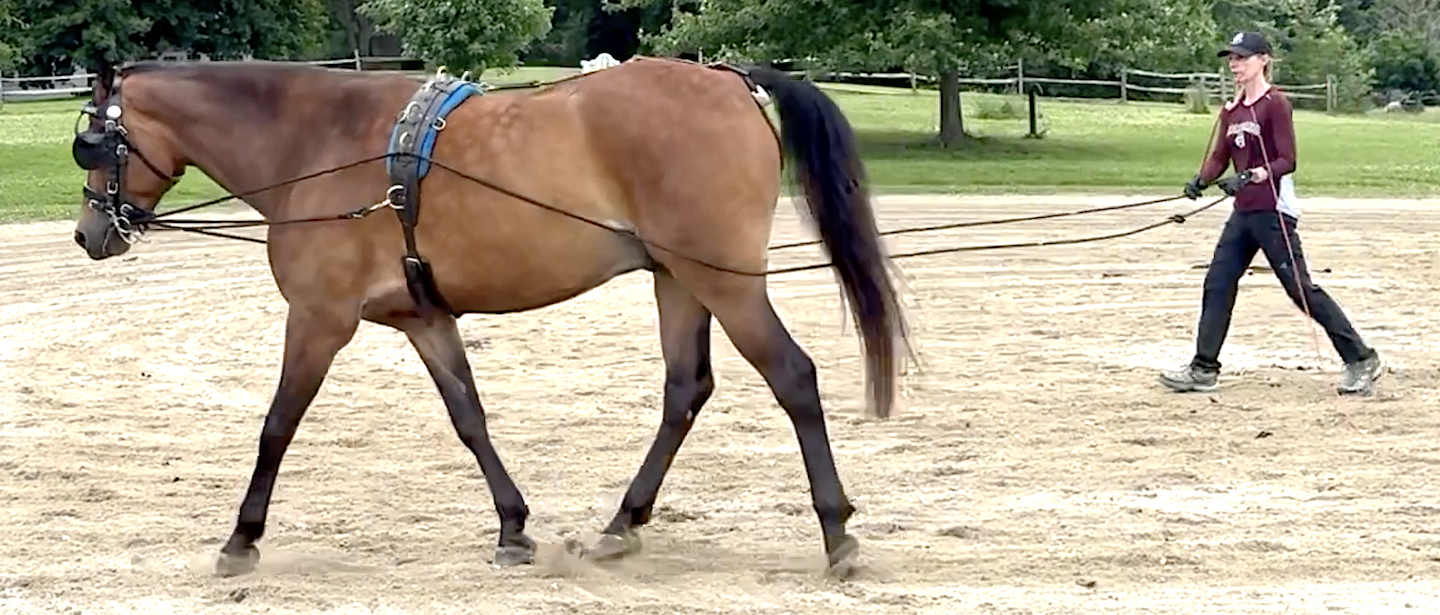
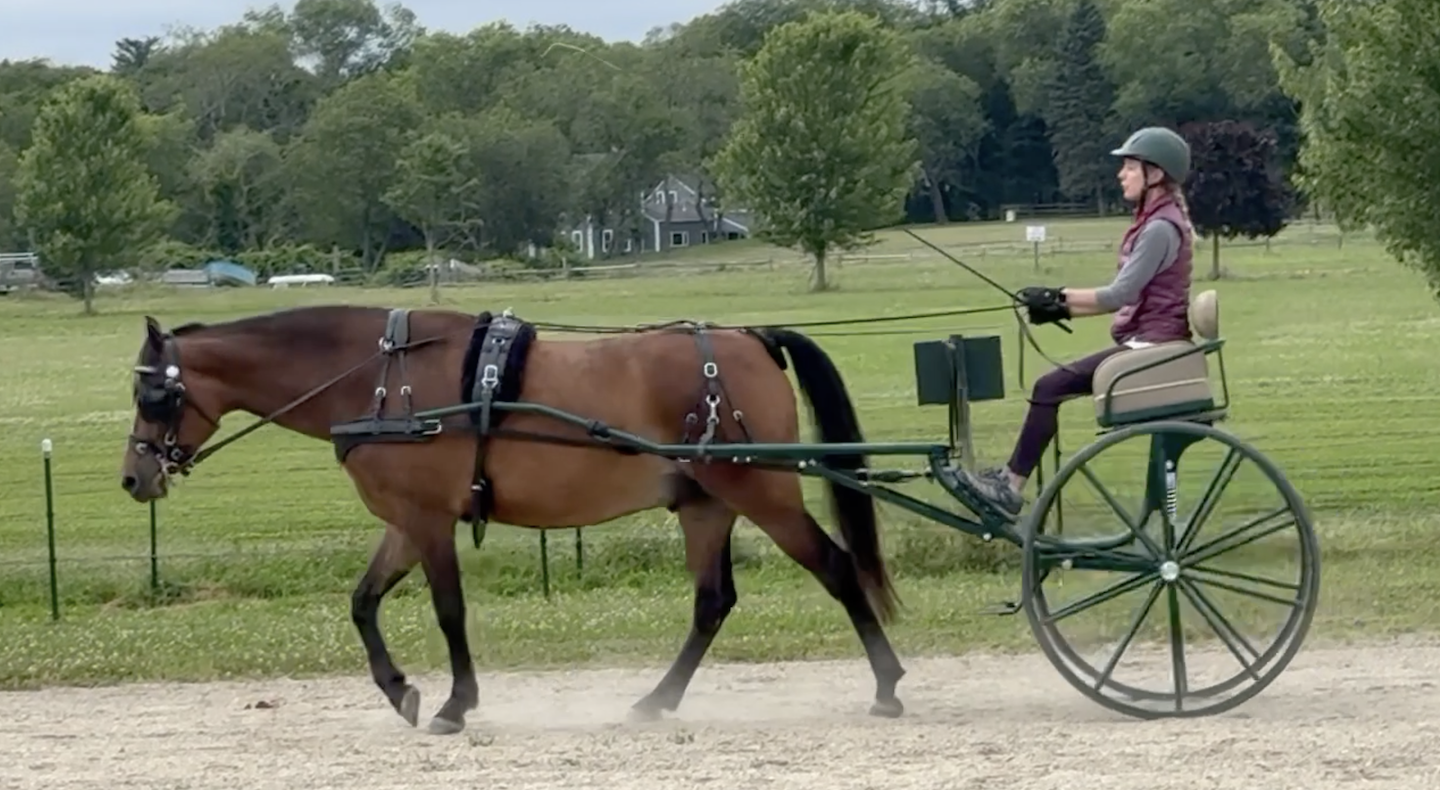
Conditioning work: double lunge lines and driving.
Working over poles to improve balance and engagement of core muscles.
Leg yielding exercise to help him engage his back muscles.
Under cart, I've been working on my own driving and posture as well, and have found it valuable to review our driving sessions because I can pin-point what I am doing wrong, and what I need to change. For example, I have a bad habit of holding my hands too low and too far out in front of my body; my elbows should make a 90 degree angle and be aligned with my core. My shoulders and arms should also be in alignment with the line of draft, with my shoulders mirroring the singletree. I need to take some of the slack out of the reins; this is a little tricky as Levi's head carriage is naturally higher and can be dynamic. He will initially put his head up when asked for an upward transition for a couple of strides, then round down and take more contact over the next few strides. I would like to encourage him to push into his upward transition more steadily but I am not entirely certain how to ask him to do this while encouraging him to stay on the bit. Having good eyes on the ground would help tremendously. Fortunately I am working on that and won't have to do this entirely on my own. There is nothing that compares to expert advice to check your position and tell you immediately what the issue is and how to fix or address it. I need to work every bit as hard, if not harder, than the horse in order to get this right.
Many thanks to Kate Cabot who shared this video and the video above.
Levi and I were also able to attend two shows this year so far. June is typically a busy month for me, and the shows I planned for that month we were unfortunately not able to attend. In May, I initially wanted to attend the Rowley Riding and Driving Club show, as we did last year, but Levi's blood work did not come back in time and without that we couldn't show. We did participate in the Morgan In Hand class offered at the Silver Heels Driving Club series in May, and took home a blue ribbon.
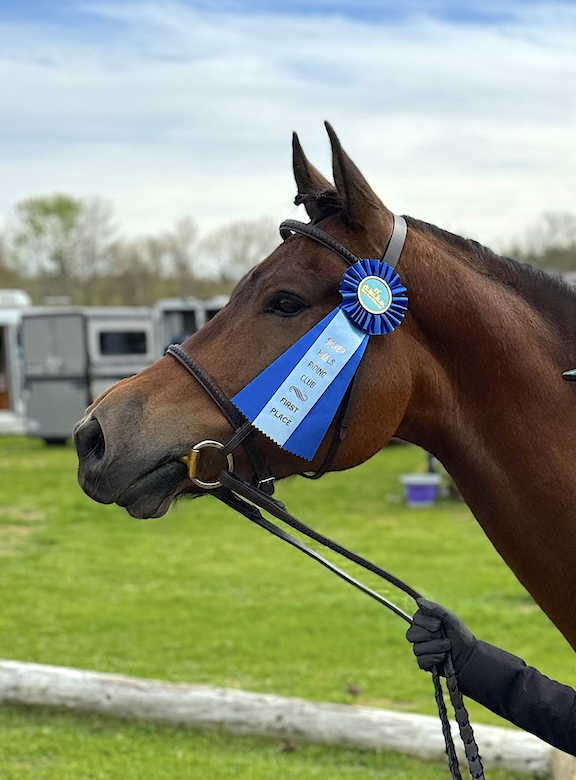
For this month, we have competed in our first AMHA rated show, the Summer Kick-Off Open Horse Show in NH, where we competed in the Morgan Open In-Hand and Specialty In-Hand classes, and respective championship classes. Attending this show was a last-minute decision as it was not on my calendar; this was a make-up show since we weren't able to participate in the rated show I had initially planned at the end of June, and as July is promising to be just as busy for me, it will be the only show I had time to attend. I intended for this show, and the rated shows in the future, to be primarily training and schooling situations for Levi, because these are large, competitive shows featuring hundreds of entries and participants, and the venues are noisy, crowded and filled with numerous potentially frightening situations for a young horse. It is a great training situation for them. It was also another chance to perfect our trailering and show routine- we are kind of a one-man band with only Joe to help us with ground support, unlike the pros who roll deep and have the resources to make these endeavors spectacularly successful experiences. I have volunteered at these breed shows before, but only for the carriage driving division, so my experience reflects that. The only real advantage we do have is Levi himself, whose pedigree is no slouch and who is willing to do just about anything I ask of him. For the in hand classes, I also knew that the horses turned out in park style and with that movement, with a group of people chasing them around the ring and stacking them up for judging, were always going to place more highly than us on our best day. This still doesn't deter me much from considering participating in these classes, even alongside professionals. At worst, we make fools of ourselves; at best, we put in the kind of performance and effort that demonstrates why people love these horses in the first place. I believe in the importance of in hand classes to illustrate the very versatility and characteristics for which this breed is known, in the absence of tack or aids from riders or drivers. In addition, the representation of sport horse and hunter turnouts in hand is lacking, as is participation in hand in general and particularly among the little guys like us who own, train, and show our own horses. If you show your Morgan, please participate in the in hand classes if you can, because these often have few entries and they can be valuable experiences for your horse and a way to support the show.
There is a canonized Standard of Perfection in judging the Morgan horse that was adopted in 1952. Regarding this, I found an interesting passage in the prizelist document from the Lippitt Country Show that describes how this organization believes the Morgan horse ought to be judged:
We underline the fact that we intend to adhere to this standard without regard to what the rest of the Morgan world is doing. Therefore, we feel that large horses should not be favored over small horses and that a “parky” way of going should not be favored over pleasure motion in either in-hand or pleasure classes.
As a novice, understanding the Standard of Perfection was extremely helpful, because I could fully appreciate what is considered desirable for Morgan type. I found this paragraph interesting:
Equally important are presence, disposition and endurance. In The Perfect Horse, William Murray describes Morgans as amiable and affectionate. The Morgan Judging Outline says: “Morgan countenance should express an abundance of energy, exemplified by a friendly attitude, and bold, energetic and fearless movement. It is actually the nervous system of the Morgan that makes him the invincible, but controllable, animal that he is. This is in contrast to the ‘hot horse’ which defies direction of his physical powers.”
One mistake (among quite a few that I made), and that sent a few giggles through the onlookers, was that I didn't know we were supposed to come blasting into the arena at a trot, as for all of the in hand classes I've participated in to date, we enter at a walk and await instruction from the judge or ring steward as to when to trot, and when to line up for judging. For sport horse in hand classes, we show on a triangle to USEF rules, which are quite clear. It also was not clear whether we were supposed to use the whole arena (we would gladly run laps if asked and nearly did), and where we were to line up for judging. Despite my confusion, Levi did exactly as I asked with one exception. The entry behind us had a couple of people one of which was chasing the horse with whips, and when he heard that whip sizzle in the air he broke into his best impression of a Morgan trot without me asking for it, and I had to pull him up in a circle and try to rejoin the lineup. Of course, Levi is very used to whips as a driving horse, but I don't wave my whip around up in the air above his head in order to get him to trot on, and I think he may have had this experience in early training as a yearling before he came to me, so his reaction makes total sense. Again, this class was supposed to be exposure to the "real" show world for him (and for me!) and it turned out to be a great experience in that regard as now he knows not to react to that noise.
In the second class, we made sure we entered at a trot, and this time allowed the other competitor to go first, which helped us save a little bit of face as we could kind of follow along. The Specialty in hand class was intended for Western turnout, which I didn't know; again, if we were in the wrong class, we weren't sure of that or how to proceed except to treat it like a regular in hand class. Some better descriptions of the type of in hand classes would be really helpful! After both classes, both Joe and some of the crowd were pretty supportive of us despite knowing we probably didn't belong there!
After we picked up our reserve and reserve championship ribbons we exited the ring and went right to our trailer to give Levi some water and a little breakfast before we packed up and drove home. The venue is only an hour away from his boarding barn which is convenient. Over all, I think we had a pretty positive experience at our first Morgan breed show, and Levi had plenty of time to confront multiple scary things to which his worst reaction was a lot of snorting and a little scoot at the one single object that should not have frightened him: an overturned jump. The people at the show, and their horses, were all lovely and had that winning glow about them, and I wished we'd had time to stick around to watch the driving! Maybe next year we will consider participating again, perhaps under cart and saddle, which is my next big goal for Levi. I'll talk about that in an upcoming post. Our next show will be another breed show in August, and I plan to devote an entire post to that because it will be a very educational and special event for us.
Good job, Levi!
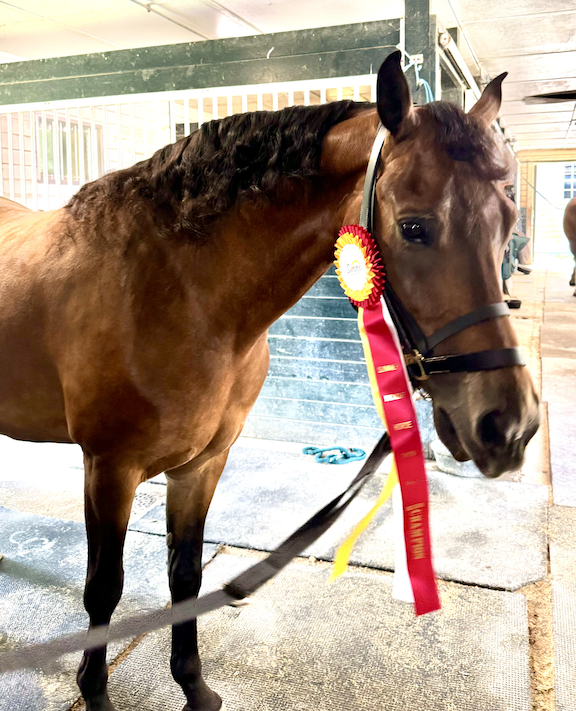
Relaxing on the 4th of July after the show. Horses don't know or care about showing. They may be willing to humor and please us, but are probably dreaming of this instead.
Member discussion